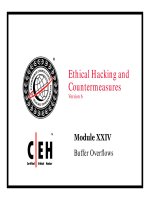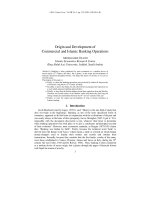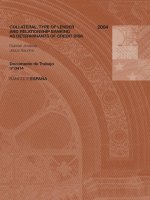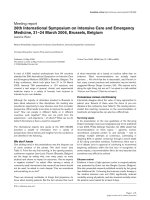Lecture Retail and merchant banking – Lecture 24
Bạn đang xem bản rút gọn của tài liệu. Xem và tải ngay bản đầy đủ của tài liệu tại đây (4.56 MB, 41 trang )
Revise Lecture 24
Cheques
•
Cheques generally contain;
1.
Place of issue
2.
Cheque number
3.
Date of issue
4.
Payee
5.
Amount of currency
Cheques
6. Signature of the drawer
7. Routing / account number
8. Fractional routing number
A cheque is generally valid indefinitely or for
six months after the date of issue unless
otherwise indicated, this varies depending
on where the cheque is drawn.
Cheques
•
Features of a
Cheque
Cheques
Features of a Cheque
•
1.
Some important features of a cheque are
given below;
A cheque must be in writing and duly
signed by the drawer.
2.
It contains an unconditional order.
3.
It is issued on a specified banker only.
•
Types of Cheques
Cheques
Types of cheques
•
•
A cheque used to pay wages due is
referref to as a payroll cheque.
A traveller’s cheque is designed to allow
the person signing it to make an
unconditional payment to someone else
as a result of paying the account holder for
that privilege. These cheques can usually
Cheques
Types of a Cheque
•
•
A cheque issued by a bank on its own
account for a customer for payment to a
third party is called a Cashier’s cheque. A
Treasure’s cheque, a Bank cheque, or a
Bank draft.
A cheque issued by a bank, but drawn on
an account with another bank, is a teller’s
cheque. In addition banks often sell money
orders.
Cheques
•
Broadly speaking, cheques are of four
types;
1.
Open cheque
2.
Crossed cheque
3.
Bearer cheque
4.
Order cheque
Cheques
Open Cheque:
•
•
•
A cheque is called ‘open’ when it is
possible to get cash over the counter at
the bank. The holder of an open cheque
can do the following;
Receive its payment over the counter at
the bank.
Deposit the cheque in the bearer’s
account.
Cheques
Crossed Cheque:
•
•
•
The risk from an open cheque can be
avoided by issuing a crossed cheque.
The payment of such a cheque is not
made over the counter at the bank. It is
only credited to the bank account of the
payee.
Cheques are usually crossed as a
measure of safety.
Cheques
Crossed Cheque:
Crossing is made by drawing two parallel
transverse lines across the face of the
cheque with or without writing ‘Account
payee’ or
Cheques
•
Bearer Cheque
Cheques
Bearer Cheque
•
•
•
A bearer cheque is payable to any person
who presents it for payment at the bank
counter. It can be transferred by mere
delivery and requires no endorsement.
A cash cheque or a bearer cheque or a
self cheque does not bear the name of the
payee.
It simply states that payable to ‘bearer’ or
Cheques
•
Order Cheque
Cheques
Order cheque
•
•
•
An order cheque is a cheque that is
payable to a particular person.
In such a cheque, the word ‘bearer’ may
be cut out or cancelled and the word
‘order’ may be written.
The payee can transfer an order cheque to
someone else by signing his or her name
on the back of it.
•
Anted – dated Cheque
Cheques
Ante – dated Cheque
•
•
This is a cheque in which the drawer
mentions the date earlier to the date of
presenting it for payment.
For example, a cheque issued on May 20,
2007 may bear a date May 5, 2007.
Cheques
•
Stale Cheque
Cheques
Stale Cheque
•
•
•
A cheque which is issued today must be
presented at bank for payment within a
stipulated period.
After expiry of that period, no payment will
be made and it is then called a stale
cheque.
Find out from your nearest bank the
validity period of a cheque.
Cheques
•
Mutilated Cheque
Cheques
Mutilated Cheque
•
•
•
In case a cheque is torn into two or more
pieces and presented for payment, such a
cheque is called mutilated cheque.
The bank will not make payment against
such a cheque without getting confirmation
of the drawer.
The bank may make payment against
such a cheque if its is torn at the corners
Cheques
•
Post-dated Cheque
Cheques
Post-dated cheque
•
•
•
This is a cheque on which the drawer
mentions a date which is subsequent to
the date on which it is presented.
For example, if a cheque presented on
May 8, 2007 bears a date of May 25,
2007, it is a post-dated cheque.
The bank will make payment only on or
after May 25, 2007
•
Parties to a Negotiable
Instruments









